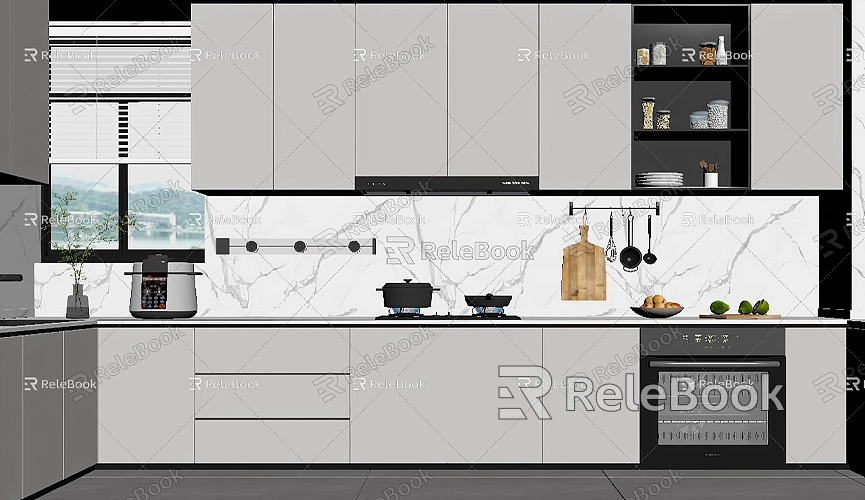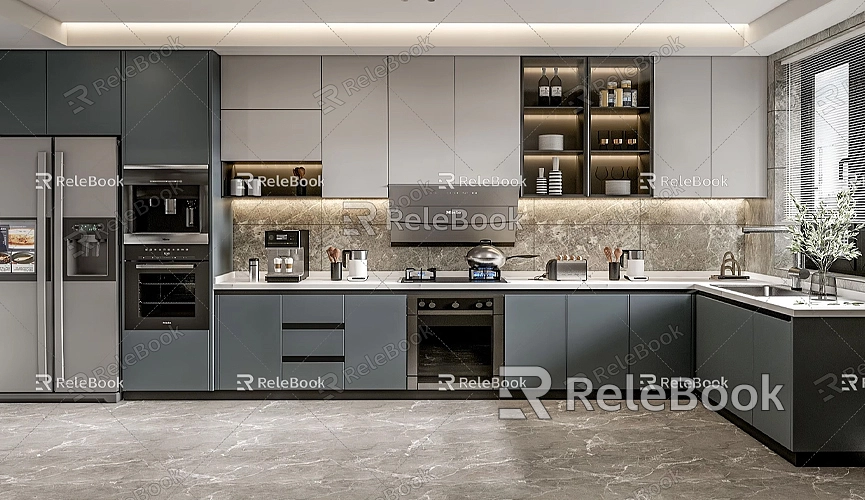How to bring a revit model into sketchup
When using SketchUp for 3D modeling, we often need to combine different components to create a complete design. Whether it's for architectural design, furniture design, or other creative projects, naturally integrating multiple components into a model is an important step to enhance design quality. However, for many beginners, seamlessly blending components with the model in SketchUp can still be a challenging task. This article will provide a detailed guide on how to work with components in SketchUp, teaching you how to naturally integrate them into the overall model for more refined 3D designs.
Understanding Components in SketchUp
In SketchUp, components are reusable model units created by users. One important feature of components is that if you modify one instance, all identical component instances will update simultaneously. This feature not only improves modeling efficiency but also maintains consistency in the model. For instance, when designing a building, you can set windows, doors, furniture, and other elements as components, then reuse them in different locations. By adjusting these components, you don't have to modify every instance individually; just change one, and the others will update automatically.

The advantages of components are clear, but to achieve better results in your projects, you need to learn how to perfectly blend these components with the overall model.
How to Naturally Blend Components with a Model
There are several key steps and techniques to follow when integrating components into a SketchUp model. Mastering these methods will make your design appear more natural and fluid, avoiding a "patchwork" effect.
Adjusting the Scale and Position of Components
Before adding components to your model, it's crucial to ensure their scale and position are appropriate. For example, if you're designing a living room and adding a sofa component, the size of the sofa should be proportional to the room; otherwise, it will look awkward. Using the "Scale" tool in SketchUp, you can easily adjust the size of the component to better fit the overall layout.
Additionally, placing the component in the right position is key. Using the "Move" and "Rotate" tools, you can accurately position the component where you want it. SketchUp provides a smart alignment feature that shows reference lines when you drag components close to other objects, helping you align them correctly.

Using the "Snapping" Tool for Precision Alignment
When integrating components with other parts of the model, there can sometimes be issues with uneven joins. In such cases, you can use the "snapping" feature to precisely align components. By holding down the Shift key, you can lock the movement direction, ensuring that the component moves along a specific axis and preventing any misalignment or offset. This technique is particularly useful for joining walls, doors, and windows that require precise alignment.
Utilizing Boolean Operations for Perfect Fusion
Sometimes, we need to "fuse" components with a model rather than simply placing them together. For example, when embedding a sink component into a countertop, we need to carve out a hole in the countertop to ensure the sink fits in. In such cases, you can use SketchUp's "Solid Tools" for Boolean operations to achieve more complex geometric effects through features like "Union" and "Difference."
The "Difference" function allows you to subtract one solid from another, which is useful for creating specific shaped holes in the model. The "Union" function can merge two solids into one, eliminating extra edges and making the model appear cleaner and more natural.
Enhancing Consistency in Style Between Components and the Overall Model
Even if you’ve already joined components with the model by adjusting their scale and position, further adjustments in materials and colors are necessary to create a more harmonious overall design. Here are several tips to help unify your model:
Uniform Materials and Colors
In reality, the same material exhibits similar visual effects across different parts. Therefore, when modeling in SketchUp, ensuring that different parts of the model use similar or complementary materials and colors will make the overall design more cohesive. SketchUp includes various material options that you can adjust and apply as needed.
If the built-in materials do not meet your needs, you can also import materials from external sources. For example, using wood grain, metal, or glass textures can significantly enhance the realism of the model. If you need high-quality 3D textures and HDRIs while creating models and virtual scenes, you can download them for free from [https://textures.relebook.com](https://textures.relebook.com). These resources can add depth to your design.
Adjusting the Details and Textures of Components
For some pre-existing components, you might need to fine-tune their details to match the overall style of the model. By using the "Material Editor" tool, you can adjust properties such as color, transparency, and reflectivity. For instance, when designing a modern kitchen, you may need to adjust the gloss effect of the cabinets or alter the angle of light reflection.
In addition to material adjustments, using the "Soften/Smooth Edges" feature in SketchUp can help make the seams between components appear more natural, eliminating harsh lines. This method effectively improves the integration between the components and the overall model.
Fully Utilize SketchUp’s Plugin Ecosystem for Enhanced Functionality
SketchUp boasts a powerful plugin ecosystem, meaning you can enhance your modeling experience by installing various plugins. These plugins can help you better adjust and blend components, making your work more efficient and enjoyable.
For example, the "Curviloft" plugin can help create streamlined surfaces, making transitions between components smoother. The "FredoScale" plugin offers a wider variety of scaling and deformation tools, allowing for more precise adjustments of components. Additionally, tools like "Solid Inspector" can help you check for geometric issues in the model, ensuring that components integrate perfectly.
Importing External Model Resources to Save Modeling Time
When designing complex models, starting from scratch can be very time-consuming. At this point, using high-quality existing model resources can greatly enhance your efficiency. You can directly access the necessary models from SketchUp's "3D Warehouse," but sometimes the quality of these resources may not fully meet your needs.
If you need more refined 3D models, you can download them from [https://3dmodels.relebook.com](https://3dmodels.relebook.com). Relebook provides a wide variety of high-quality 3D resources covering various scenes and styles, enriching your designs.
In SketchUp, naturally blending components with models not only improves efficiency but also elevates the design quality. By adjusting the scale and position of components, ensuring precise alignment, unifying materials and styles, and wisely using plugins and external resources, you can easily create beautiful 3D models.
Whether you are a beginner or an experienced designer, mastering these techniques will help you create more professional and realistic design effects in SketchUp. If you need high-quality 3D textures and HDRIs while creating models and virtual scenes, you can download them for free from [https://textures.relebook.com](https://textures.relebook.com). If you need exquisite 3D models, you can download them from [https://3dmodels.relebook.com](https://3dmodels.relebook.com). Relebook provides a wealth of high-quality 3D resources. I hope this article helps you achieve better results in your modeling process in SketchUp, making every detail more perfect.

